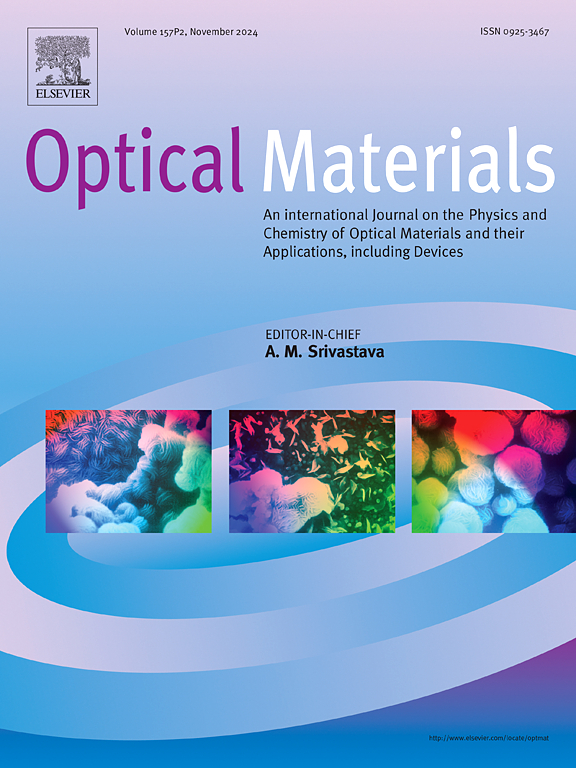基于MoWSe2饱和吸收器的被动锁模高重复频率脉冲光纤激光器
IF 3.8
3区 材料科学
Q2 MATERIALS SCIENCE, MULTIDISCIPLINARY
引用次数: 0
摘要
过渡金属二硫族化合物(TMDs)由于其特殊的物理化学性质和广阔的应用前景而日益引起研究人员的兴趣。目前,新型三元TMD合金MoWSe2作为可饱和吸收体(SA)的应用潜力研究尚不成熟。本文在mowse2sa中实现q交换后,首次实现了模式锁定。本研究采用液相剥离(LPE)法制备了调制深度为7.9%、饱和强度为14.7 MW/cm2的高质量MoWSe2 SA。实现了稳定的常规孤子(CS)和多阶谐波锁模(HML)。HML的最高阶达到第86阶,最大重复频率为374.8 MHz。这代表了迄今为止在基于MoWSe2 SA的光纤激光器中实现的最高重复频率。结果表明,MoWSe2 SA具有优异的非线性光调制性能,为其在超快光子学领域的学术探索和工程实践创新奠定了基础。本文章由计算机程序翻译,如有差异,请以英文原文为准。
Passively mode-locking fiber lasers for generating high repetition frequency pulse based on MoWSe2 saturable absorbers
Transition metal dichalcogenides (TMDs) have increasingly attracted the interest of researchers due to their exceptional physical and chemical properties and broad application prospects. Currently, research on the application potential of the novel ternary TMD alloy MoWSe2 as a saturable absorber (SA) is not yet mature. This artical achieves mode-locking for the first time after implementing Q-switching in MoWSe2 SA. This study employed the liquid-phase exfoliation (LPE) method to fabricate a high-quality MoWSe2 SA with a modulation depth of 7.9 % and a saturation intensity of 14.7 MW/cm2. Stable conventional solitons (CS) and harmonic mode-locking (HML) of multiple orders were achieved. The highest order of HML reached the 86th order, with a maximum repetition frequency of 374.8 MHz. This represents the highest repetition frequency achieved to date in fiber lasers based on a MoWSe2 SA. The results show that MoWSe2 SA exhibits excellent nonlinear optical modulation performance, which lays the foundation for its role in advancing academic exploration and innovation in engineering practice in the field of ultrafast photonics.
求助全文
通过发布文献求助,成功后即可免费获取论文全文。
去求助
来源期刊

Optical Materials
工程技术-材料科学:综合
CiteScore
6.60
自引率
12.80%
发文量
1265
审稿时长
38 days
期刊介绍:
Optical Materials has an open access mirror journal Optical Materials: X, sharing the same aims and scope, editorial team, submission system and rigorous peer review.
The purpose of Optical Materials is to provide a means of communication and technology transfer between researchers who are interested in materials for potential device applications. The journal publishes original papers and review articles on the design, synthesis, characterisation and applications of optical materials.
OPTICAL MATERIALS focuses on:
• Optical Properties of Material Systems;
• The Materials Aspects of Optical Phenomena;
• The Materials Aspects of Devices and Applications.
Authors can submit separate research elements describing their data to Data in Brief and methods to Methods X.
 求助内容:
求助内容: 应助结果提醒方式:
应助结果提醒方式:


